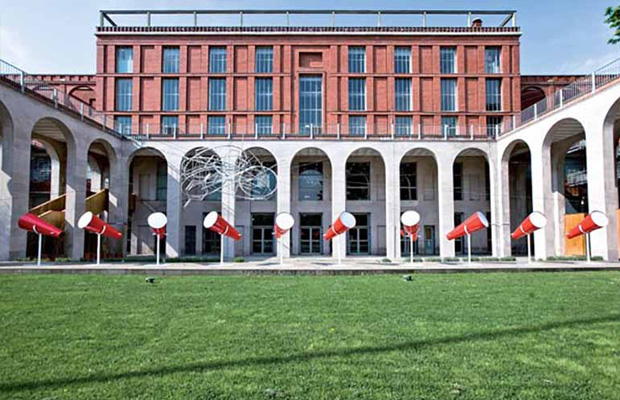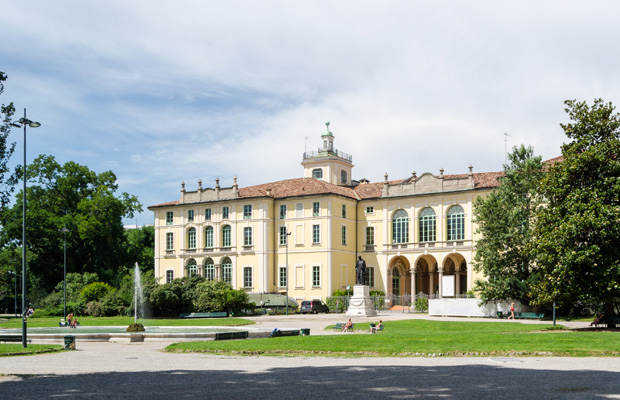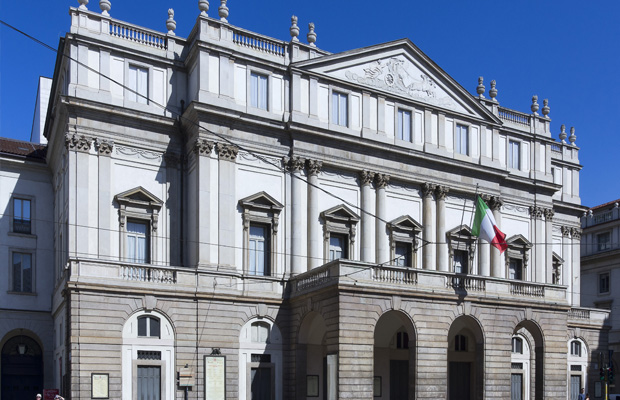Duomo di Milano
Duomo di Milano
Italy
Milan
Milan Travel Guide
Book Tour & Activities
Your tour in Milan.
Book your stay
Your hotel in Milan.
Overview
Milan Cathedral is the cathedral church of Milan, Lombardy, Italy. Dedicated to the Nativity of St Mary, it is the seat of the Archbishop of Milan, currently Archbishop Mario Delpini. The cathedral took nearly six centuries to complete: construction began in 1386
Milan Cathedral is the cathedral church of Milan, Lombardy, Italy. Dedicated to the Nativity of St Mary, it is the seat of the Archbishop of Milan, currently Archbishop Mario Delpini. The cathedral took nearly six centuries to complete: construction began in 1386, and the final details were completed in 1965. It is the largest church in Italy—the larger St. Peter's Basilica is in the State of Vatican City, a sovereign nation—and the second largest in Europe and the fourth largest in the world.
History
Milan's layout, with streets either radiating from the Duomo or circling it, reveals that the Duomo occupies what was the most central site in Roman Mediolanum, that of the public basilica facing the forum. The first cathedral, the "new basilica" (basilica nova) dedicated to St Thecla, was completed by 355. It seems to share, on a slightly smaller scale, the plan of the contemporaneous church recently rediscovered beneath Tower Hill in London.[5] An adjoining basilica was erected in 836. The old octagonal baptistery, the Battistero Paleocristiano, dates to 335 and still can be visited under the Cathedral. When a fire damaged the cathedral and basilica in 1075, they were rebuilt as the Duomo.
Construction begins
In 1386, Archbishop Antonio da Saluzzo began construction of the cathedral. Start of the construction coincided with the ascension to power in Milan of the archbishop's cousin Gian Galeazzo Visconti, and was meant as a reward to the noble and working classes, who had suffered under his tyrannical Visconti predecessor Barnabò. Before actual work began, three main buildings were demolished: the palace of the Archbishop, the Ordinari Palace and the Baptistry of St. Stephen at the Spring, while the old church of Sta. Maria Maggiore was exploited as a stone quarry. Enthusiasm for the immense new building soon spread among the population, and the shrewd Gian Galeazzo, together with his cousin the archbishop, collected large donations for the work-in-progress. The construction program was strictly regulated under the "Fabbrica del Duomo", which had 300 employees led by first chief engineer Simone da Orsenigo. Orsenigo initially planned to build the cathedral from brick in Lombard Gothic style.
Visconti had ambitions to follow the newest trends in European architecture. In 1389, a French chief engineer, Nicolas de Bonaventure, was appointed, adding to the church its Rayonnant Gothic. Galeazzo gave the Fabbrica del Duomo exclusive use of the marble from the Candoglia quarry and exempted it from taxes. Ten years later another French architect, Jean Mignot, was called from Paris to judge and improve upon the work done, as the masons needed new technical aid to lift stones to an unprecedented height.[8] Mignot declared all the work done up till then as in pericolo di ruina ("peril of ruin"), as it had been done sine scienzia ("without science"). In the following years Mignot's forecasts proved untrue, but they spurred Galeazzo's engineers to improve their instruments and techniques. Work proceeded quickly, and at the death of Gian Galeazzo in 1402, almost half the cathedral was complete. Construction, however, stalled almost totally until 1480, for lack of money and ideas: the most notable works of this period were the tombs of Marco Carelli and Pope Martin V (1424) and the windows of the apse (1470s), of which those extant portray St. John the Evangelist, by Cristoforo de' Mottis, and Saint Eligius and San John of Damascus, both by Niccolò da Varallo. In 1452, under Francesco Sforza, the nave and the aisles were completed up to the sixth bay.
In 1488, both Leonardo da Vinci and Donato Bramante created models in a competition to design the central cupola; Leonardo later withdrew his submission.[9] In 1500 to 1510, under Ludovico Sforza, the octagonal cupola was completed, and decorated in the interior with four series of 15 statues each, portraying saints, prophets, sibyls and other Figures from the Bible. The exterior long remained without any decoration, except for the Guglietto dell'Amadeo ("Amadeo's Little Spire"), constructed 1507–1510. This is a Renaissance masterwork which nevertheless harmonized well with the general Gothic appearance of the church.
During the subsequent Spanish domination, the new church proved usable, even though the interior remained largely unfinished, and some bays of the nave and the transepts were still missing. In 1552 Giacomo Antegnati was commissioned to build a large organ for the north side of the choir, and Giuseppe Meda provided four of the sixteen pales which were to decorate the altar area (the program was completed by Federico Borromeo). In 1562, Marco d' Agrate's St. Bartholomew and the famous Trivulzio candelabrum (12th century) were added.
Borromeo
After the accession of Carlo Borromeo to the archbishop's throne, all lay monuments were removed from the Duomo. These included the tombs of Giovanni, and Filippo Maria Visconti, Francesco I and his wife Bianca, Galeazzo Maria, which were brought to unknown destinations. However, Borromeo's main intervention was the appointment, in 1571, of Pellegrino Pellegrini as chief engineer— a contentious move, since to appoint Pellegrino, who was not a lay brother of the duomo, required a revision of the Fabbrica's statutes.
Borromeo and Pellegrini strove for a new, Renaissance appearance for the cathedral, that would emphasise its Roman / Italian nature, and subdue the Gothic style, which was now seen as foreign. As the façade still was largely incomplete, Pellegrini designed a "Roman" style one, with columns, obelisks and a large tympanum. When Pellegrini's design was revealed, a competition for the design of the façade was announced, and this elicited nearly a dozen entries, including one by Antonio Barca [10]
This design was never carried out, but the interior decoration continued: in 1575-1585 the presbytery was rebuilt, while new altars and the baptistry were added. The wooden choir stalls were constructed by 1614 for the main altar by Francesco Brambilla. In 1577 Borromeo finally consecrated the whole edifice as a new church, distinct from the old Santa Maria Maggiore and Santa Tecla (which had been unified in 1549 after heavy disputes).
17th century
At the beginning of the 17th century Federico Borromeo had the foundations of the new façade laid by Francesco Maria Richini and Fabio Mangone. Work continued until 1638 with the construction of five portals and two middle windows. In 1649, however, the new chief architect Carlo Buzzi introduced a striking revolution: the façade was to revert to original Gothic style, including the already finished details within big Gothic pilasters and two giant belfries. Other designs were provided by, among others, Filippo Juvarra (1733) and Luigi Vanvitelli (1745), but all remained unapplied. In 1682 the façade of Santa Maria Maggiore was demolished and the cathedral's roof covering completed.
In 1762 one of the main features of the cathedral, the Madonnina's spire, was erected at the dizzying height of 108.5 m. The spire was designed by Carlo Pellicani and sports at the top a famous polychrome Madonnina statue, designed by Giuseppe Perego that befits the original stature of the cathedral.[11] Given Milan's notoriously damp and foggy climate, the Milanese consider it a fair-weather day when the Madonnina is visible from a distance, as it is so often covered by mist.
Completion
Design for the crowning of Ferdinand I of Austria at the Duomo in 1838, by Alessandro Sanquirico
On 20 May 1805, Napoleon Bonaparte, about to be crowned King of Italy, ordered the façade to be finished by Pellicani. In his enthusiasm, he assured that all expenses would fall to the French treasurer, who would reimburse the Fabbrica for the real está it had to sell. Even though this reimbursement was never paid, it still meant that finally, within only seven years, the Cathedral's façade was completed. Pellicani largely followed Buzzi's project, adding some neo-Gothic details to the upper windows. As a form of thanksgiving, a statue of Napoleon was placed at the top of one of the spires. Napoleon was crowned King of Italy at the Duomo.
In the following years, most of the missing arches and spires were constructed. The statues on the southern wall were also finished, while in 1829–1858, new stained glass windows replaced the old ones, though with less aesthetically significant results. The last details of the cathedral were finished only in the 20th century: the last gate was inaugurated on 6 January 1965. This date is considered the very end of a process which had proceeded for generations, although even now, some uncarved blocks remain to be completed as statues. The Allied bombing of Milan in World War II further delayed construction. Like many other cathedrals in cities bombed by the Allied forces, the Duomo suffered some damage, although to a lesser degree compared to other major buildings in the vicinity such as the La Scala Theatre. It was quickly repaired and became a place of solace and gathering for displaced local residents.[12]
The Duomo's main façade went under renovation from 2003 to early 2009: as of February 2009, it has been completely uncovered, showing again the colours of the Candoglia marble.
In November 2012 officials announced a campaign to raise funds for the cathedral's preservation by asking patrons to adopt the building's spires. The effects of pollution on the 14th-century building entail regular maintenance, and recent austerity cuts to Italy's culture budget has left less money for upkeep of cultural institutions, including the cathedral. To help make up funds, Duomo management launched a campaign offering its 135 spires up for "adoption." Donors who contribute €100,000 (about $110,505) or more will have a plaque with their name engraved on it placed on the spire.
A 2-min walk from the Royal Palace of Milan
Address: P.za del Duomo, 20122 Milano MI, Italy
Height: 108 m
Hours: Open ⋅ Closes 7PM
Architects: Donato Bramante, Giovanni Antonio Amadeo, MORE
Architectural styles: Gothic architecture, Renaissance architecture, Gothic Revival architecture, Italian Gothic architecture
Video Travel Inspiration
See Duomo di Milano on Map
Most Popular Cities

Siem Reap
Cambodia
Ho Chi Minh City
Vietnam
Beijing
China
Paris
France
London
United Kingdom
New York
USA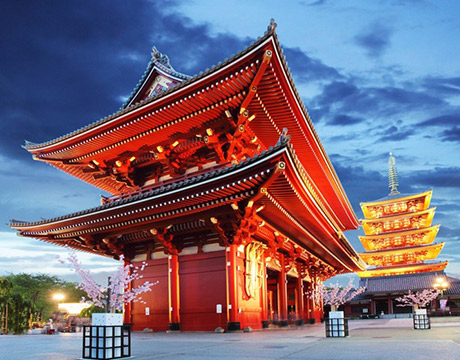
Tokyo
Japan
Bangkok
Thailand
Seoul
South Korea
Vientiane
Laos
Yangon
Myanmar
Washington DC
USA
Los Angeles
USA
Ottawa
Canada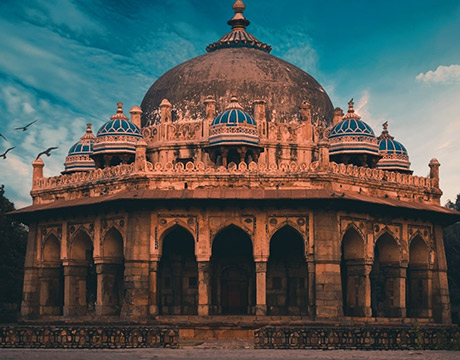
New Delhi
India
Singapore
Singapore
Kuala Lumpur
Malaysia
 English
English French
French Khmer
Khmer Thai
Thai Vietnamese
Vietnamese Chinese
Chinese Korean
Korean German
German Japanese
Japanese Italian
Italian Russian
Russian Spanish
Spanish Dutch
Dutch Indonesian
Indonesian Malay
Malay

